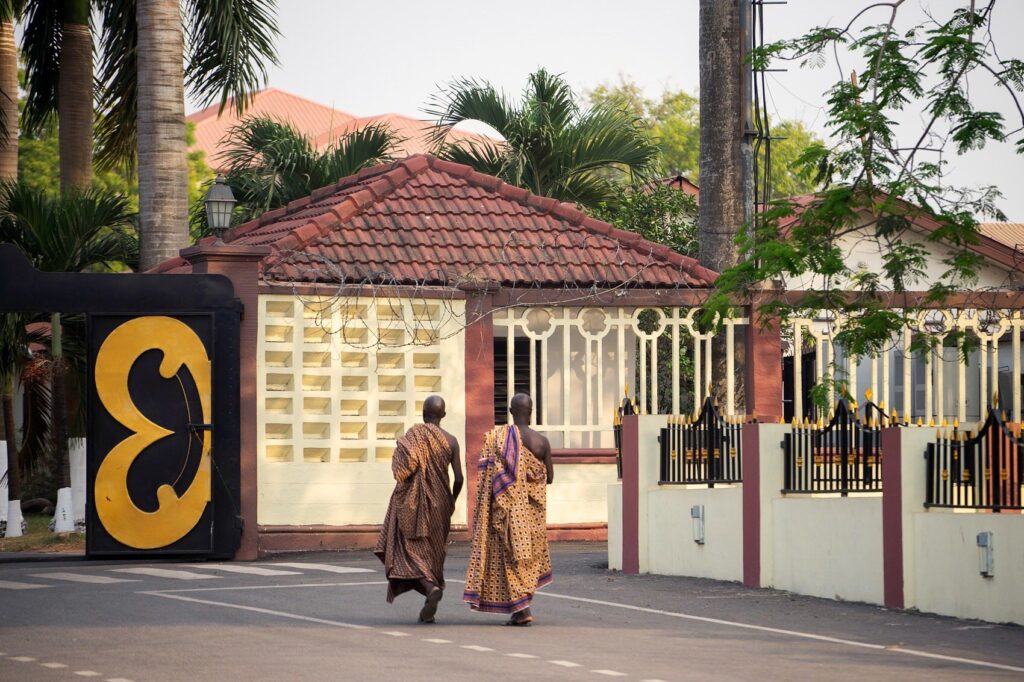Introduction
The Manhyia Palace, located in Kumasi, Ghana, is an important symbol of the Ashanti Kingdom. The palace is home to the Asantehene, the King of the Ashanti people, and serves as a hub for the Ashanti culture. It is a place of immense cultural and historical importance, and draws visitors from all over the world.
A Brief History of Manhyia Palace
The Manhyia Palace was built in 1925 by the British colonial government, and was later used as the official residence for the Asantehene. The palace has been home to the Asantehene ever since and is a major symbol of the Ashanti people. It has served as a site of major historical events, such as the signing of the Ashanti Treaty of 1925 and the coronation of the Asantehene, Otumfuo Osei Tutu II.
The Structure of Manhyia Palace
The Manhyia Palace is an impressive structure, built in the traditional Ashanti architectural style. It is built of mud and wattle, with a thatched roof and consists of four main structures. These include the main palace, the reception hall, the guest house, and the durbar hall. The main palace is the residence of the Asantehene and is used for official business. The reception hall is used to receive dignitaries and visitors, while the guest house is used to accommodate visitors to the palace. The durbar hall is the centerpiece of the palace and is used for important ceremonies and celebrations.
The Palace Grounds
The Manhyia Palace is situated on a 20-acre site, which is home to various gardens, shrines, pools, and other structures. The grounds are home to the Manhyia Museum, which houses a collection of artifacts, photographs, and other objects related to the history of the Ashanti Kingdom. There is also a shrine dedicated to the Asantehene, as well as a sacred pool where the Asantehene is believed to take his morning bath.
The Palace Museum
The Manhyia Palace Museum is an important source of information about the history of the Ashanti people. The museum houses a collection of artifacts, photographs, and other objects related to the history of the Ashanti Kingdom. It also includes a library containing books on the history of the Ashanti Kingdom and its culture. Visitors to the museum can learn about the history of the kingdom and its people, as well as the various customs and traditions of the Ashanti people.
Conclusion
The Manhyia Palace is an important symbol of the history and culture of the Ashanti people. It is a place of immense cultural and historical importance, and draws visitors from all over the world. With its impressive structure and grounds, it is a must-visit for anyone interested in learning more about the Ashanti Kingdom.

